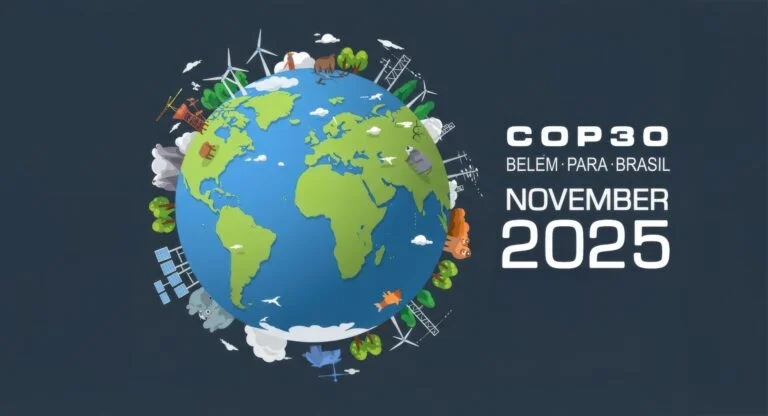Day 4 of COP30 in Belém opened against a backdrop of strong expectations and mounting tension. The summit’s focus shifted...
Read More- Energy Insights, Industry Updates
Critical Minerals at Risk: The Challenge to Achieving Net Zero
-
 Hilly Hannam-Seymour
Hilly Hannam-Seymour
- 3 minute read
The global push towards net-zero emissions is driving unprecedented demand for critical minerals. Resources like lithium, cobalt, and copper are the backbone of renewable energy technologies, from wind turbines and solar panels to the batteries that power electric vehicles (EVs). However, a recent report highlights that nearly 70% of these minerals are at risk due to climate change, geopolitical tensions, and supply chain vulnerabilities. This alarming trend poses a serious challenge to the clean energy transition and global sustainability goals.

Climate Change: A Growing Threat
One of the primary risks to critical mineral supplies stems from the increasing impact of climate change. By 2050, projections indicate that more than 70% of copper, cobalt, and lithium production could experience severe drought conditions. Mining operations, which require substantial amounts of water, could face significant disruptions as water becomes scarcer.
In addition, rising global temperatures and extreme weather events threaten mining infrastructure and transportation networks. Flooding, heatwaves, and storms can shut down operations and damage logistics pathways, further destabilising the supply chain.
Geopolitical Concentration and Vulnerabilities
Another major concern is the geographical concentration of critical mineral production. A significant portion of these resources is extracted and processed in a small number of countries, with China holding a dominant position. For instance, China currently processes around 80% of the world’s rare earth minerals, which are crucial for high-tech and renewable energy applications.
This reliance on a single country creates vulnerabilities in the global supply chain. Recent geopolitical developments, such as China’s decision to restrict exports of key high-tech materials to the United States, illustrate the risks of overdependence on a single supplier. In times of political tension, access to these vital resources could be limited, stalling progress on renewable energy projects.
Investment Shortfalls and Challenges
Meeting the growing demand for critical minerals requires substantial investment. The International Energy Agency (IEA) estimates that around $4.1 trillion is needed to develop the mining, processing, and recycling capacity required for the net-zero transition. However, securing this investment is fraught with challenges.
- Geopolitical Sensitivities: Investors may hesitate to fund projects in politically unstable regions, fearing that tensions could jeopardise operations.
- Environmental Concerns: Mining and processing activities often have significant environmental impacts, such as habitat destruction and pollution. Striking a balance between sustainability and resource extraction is a complex issue.
- Lengthy Development Timelines: Opening new mines or expanding existing operations can take years, sometimes decades, due to regulatory hurdles and community opposition.
Strategies for Mitigating Risks
Despite these challenges, governments, businesses, and international organisations are taking steps to address the risks to critical mineral supplies. Some of the key strategies include:
- Diversification of Supply Chains
Countries are investing in alternative sources to reduce dependence on dominant suppliers like China. For instance, Australia has significantly increased funding for its rare earths industry to strengthen its position in the global supply chain. This move is part of a broader effort to diversify sourcing and reduce vulnerabilities.
- International Collaboration
Alliances like the U.S.-led Minerals Security Partnership aim to enhance cooperation among allied nations. By pooling resources and expertise, these partnerships seek to create more resilient and secure supply chains.
- Advancing Recycling Technologies
Recycling and promoting a circular economy can help reduce the pressure on newly mined resources. For example, recovering lithium from used EV batteries or reprocessing rare earth magnets can contribute to a more sustainable supply chain.
- Exploring Alternative Materials
Innovations in material science are opening doors to alternative solutions. Researchers are exploring substitutes for critical minerals in various technologies, which could reduce dependency on high-risk materials.
The Role of Policymakers and Industry Leaders
Policymakers and industry leaders have a crucial role to play in ensuring a stable supply of critical minerals. Governments must implement supportive policies that encourage investment in mining and processing while adhering to stringent environmental standards. Similarly, industry leaders must commit to sustainable practices, prioritising ethical sourcing and reducing the environmental impact of their operations.
In parallel, public awareness campaigns can drive demand for responsibly sourced materials, pushing businesses to adopt more transparent and sustainable supply chain practices.
The global energy transition is at a crossroads. The world’s reliance on critical minerals presents both an opportunity and a challenge. While these resources are indispensable for achieving net-zero goals, the risks to their supply cannot be ignored. Climate change, geopolitical tensions, and supply chain vulnerabilities demand urgent and coordinated action.
By investing in diversified supply chains, fostering international collaboration, and embracing innovation, we can mitigate the risks and build a more sustainable future. However, the clock is ticking. The choices made today will shape the trajectory of the global net-zero journey for decades to come. For more information, visit our energy updates page.


